Best mountain bikes under £500: Mountain bikes for those on the tightest budgets
We help you choose the best mountain bikes under £500, proving that cheap does not have to equal nasty
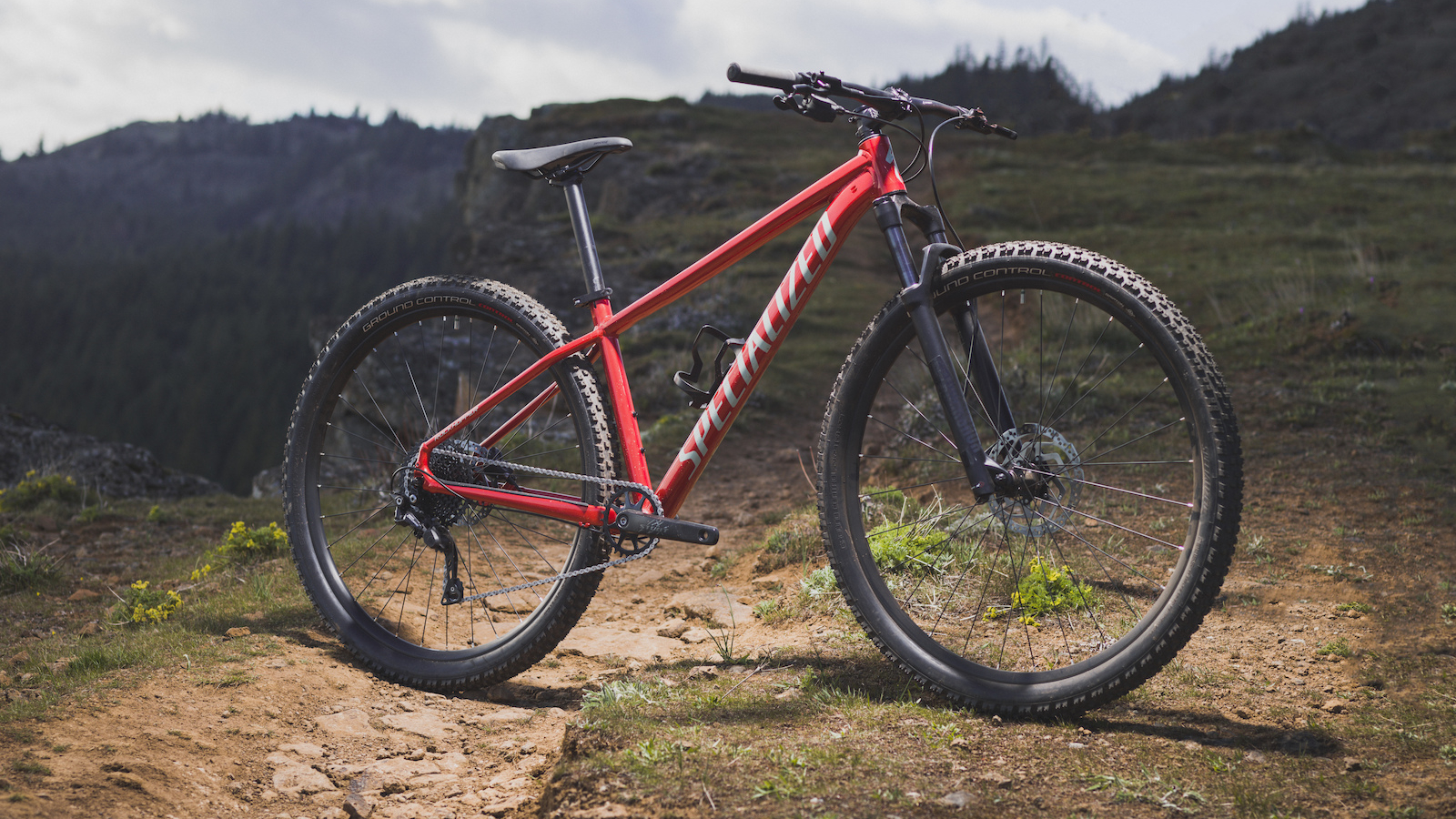
Mountain bikes are a passport to adventure, fitness and thrills, but they can be expensive. However, the best mountain bikes under £500 can give you all of the fun but at a more acceptable price.
Trickle-down economics work in the mountain biking world. The caliber of technology and features available on the best budget mountain bikes would have been considered entirely credible for a mid-spec model in 2010.
There are now hydraulic disc brakes and reliable front suspension forks on the best mountain bikes under £500, not to mention wider handlebars and frame angles that are inspiring to ride. Whereas entry-level mountain bikes were often commuter frames with some additional tube strength to cope with off-road terrain, the modern budget mountain bike has proper geometry to ensure peak rider enjoyment when descending technical terrain.
We already have a guide covering the best mountain bikes under £1,000 but what if you want to spend less but still shred the trails? Keep reading for our pick of the best mountain bikes under £500 or skip to the bottom for advice on how to choose the best mountain bike under £500.
Alternatively, if your budget can stretch a little further, our guide to the best mountain bikes under £2,000 pushes the spec list up another notch, and our guide to the best hardtail mountain bikes sets the benchmark for the sector.
Best mountain bikes under £500
Why trust BikePerfect
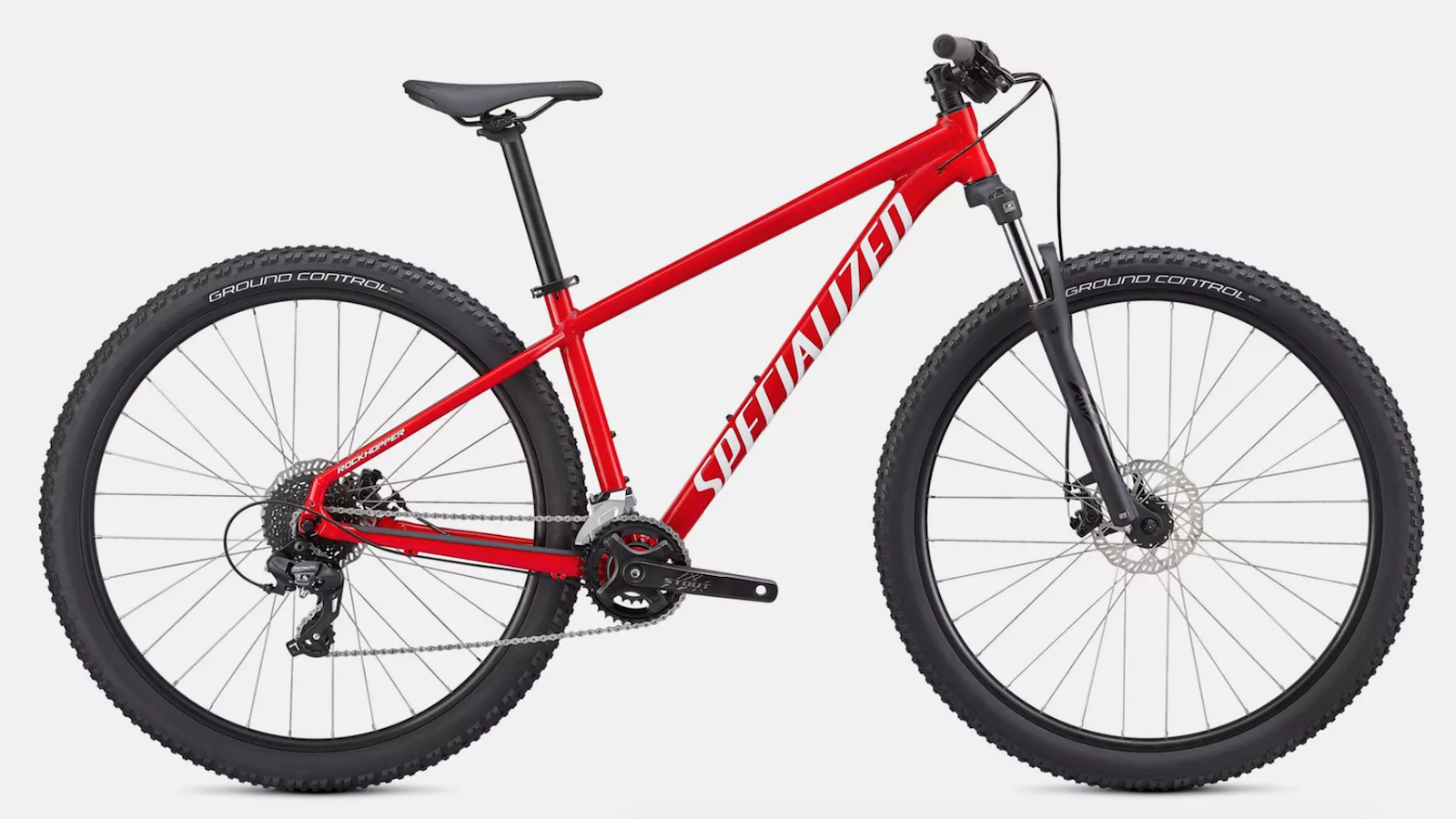
Specialized Rockhopper 27.5
Specifications
Reasons to buy
Reasons to avoid
From the Californian cycling brand with a deserved reputation for innovation, comes the Rockhopper. This Rockhopper model with 27.5-inch wheels is only available in smaller sizes, but there is a 29-inch companion for taller riders. The drivetrain is a combination of Shimano and MicroSHIFT parts configured in a 2 x 8 setup.
The alloy frame has a neat appearance with tidy weld points and internal frame routing to ensure a clean aesthetic. Suntour’s XCM coil-sprung fork does duty on all Rockhopper Sports, with the smaller frames running it at 80-90mm of travel, while medium and larger sizes up that to 100mm.
All SR Suntour forks on these Specialized Rockhoppers feature a similar 42mm offset, chosen to work with some very balanced geometry numbers. With a 68-degree head angle, Specialized’s Rockhopper is not the slackest budget mountain bike, but you will never feel unbalanced when descending. On a size Medium frame, the reach number is 415mm, which is about average.
Wheels and tires are what give you the greatest confidence navigating off-road terrain and slippery trails. Tire specification on the Rockhopper is Specialized’s generously sized 27.5 x 2.3in Ground Control Sports, seated on relatively broad 25mm internal diameter rims.
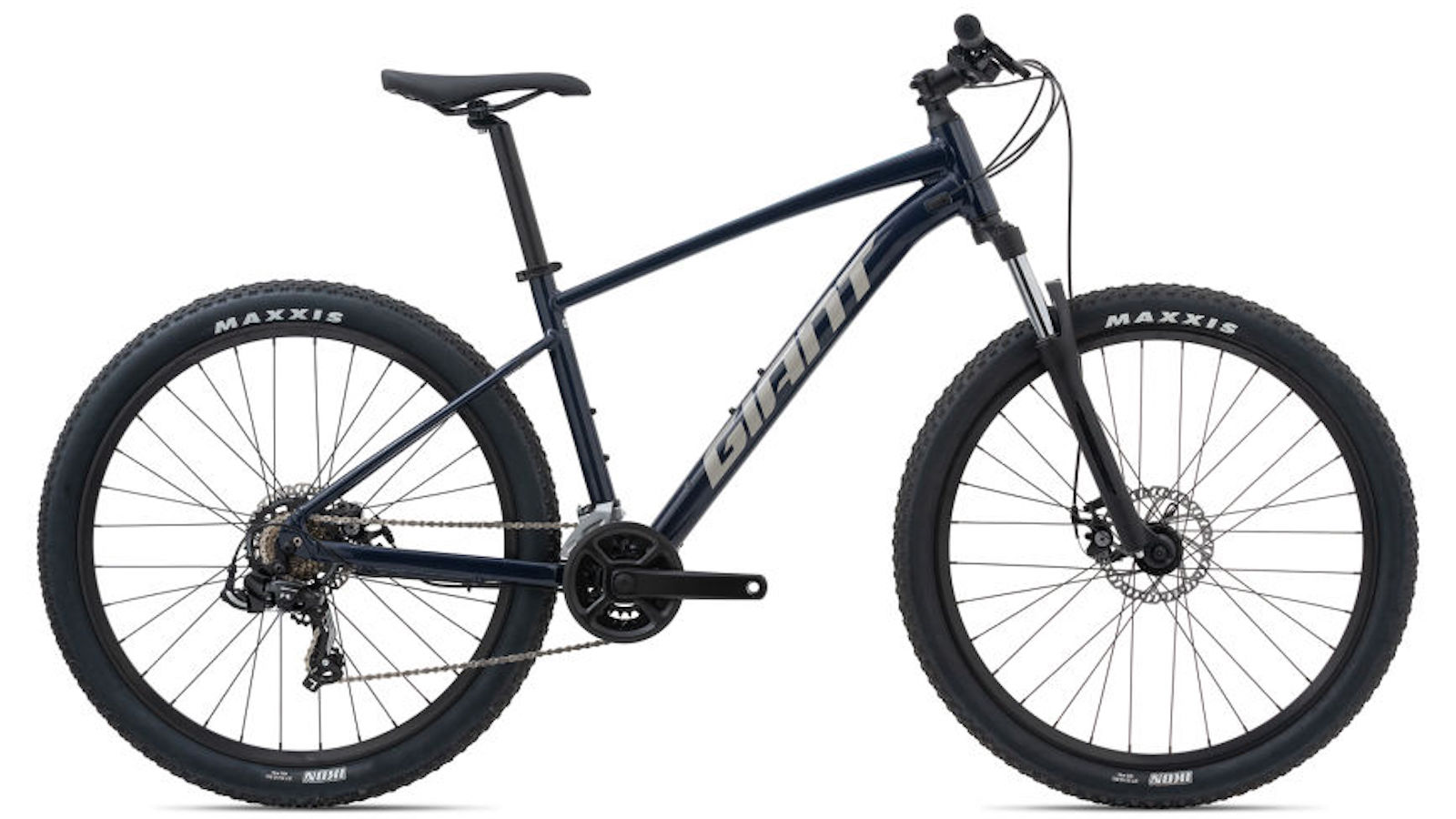
Giant Talon 4
Specifications
Reasons to buy
Reasons to avoid
From the world’s largest frame company comes a very convincing value hardtail. The Talon might be light on price, but it does not sacrifice in terms of construction or components.
The sheer scale of Giant’s business and purchasing leverage allows for some rather nice components on this sub-£500 bike. Tektro TDK hydraulic disc brakes control your momentum out on the trail and there are decently sized Maxxis Ikon 2.2in tires that roll you along.
Steering you into corners is a very generously sized Giant handlebar, which measures 780mm in length, creating very adequate leverage and riding stability in technical terrain. With a slack 67.5-degree head angle, the Talon will come into its own when navigating down steeper trails.
Good specification and clever geometry are complemented by the Talon’s exceptional range of frame sizes, which total no less than six, available in both the 27.5- and 29-inch wheel sizes.
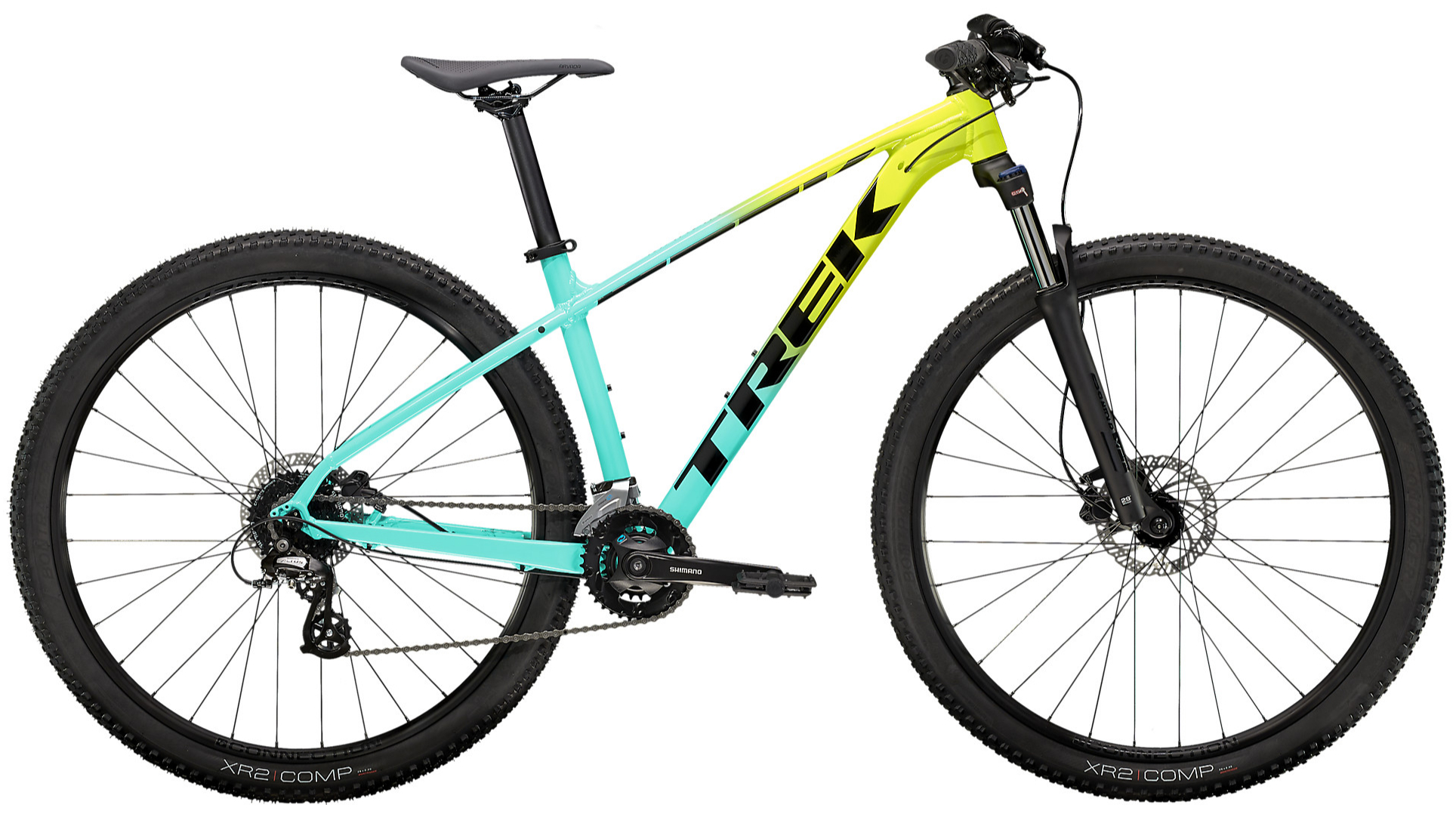
Trek Marlin 5
Specifications
Reasons to buy
Reasons to avoid
There is nothing fishy about Trek’s Marlin 5 hardtail mountain bike. The Wisconsin bike brand delivers a broad frame sizing spectrum with its Marlin 5, rolling the XS and S versions on 27.5in wheels, while all other sizes benefit from proportionally appropriate 29-inch wheels.
Shimano’s entry-level Altus and Tourney components blend to form the 3 x 7 drivetrain. Geometry isn’t quite as daring as some other bikes on our list, but with a 69.5-degree head angle, the Marlin 5 will make an adept climbing bike and comfortable gravel road tourer.
There are different stem lengths, too, corresponding to frame, size, with the smallest Marlins running a 50mm stem and the largest bikes, 90mm. The company’s Blendr stem is also brilliantly adaptable, pairing easily with various head unit mounts for cycling computers, GPS devices or lights.
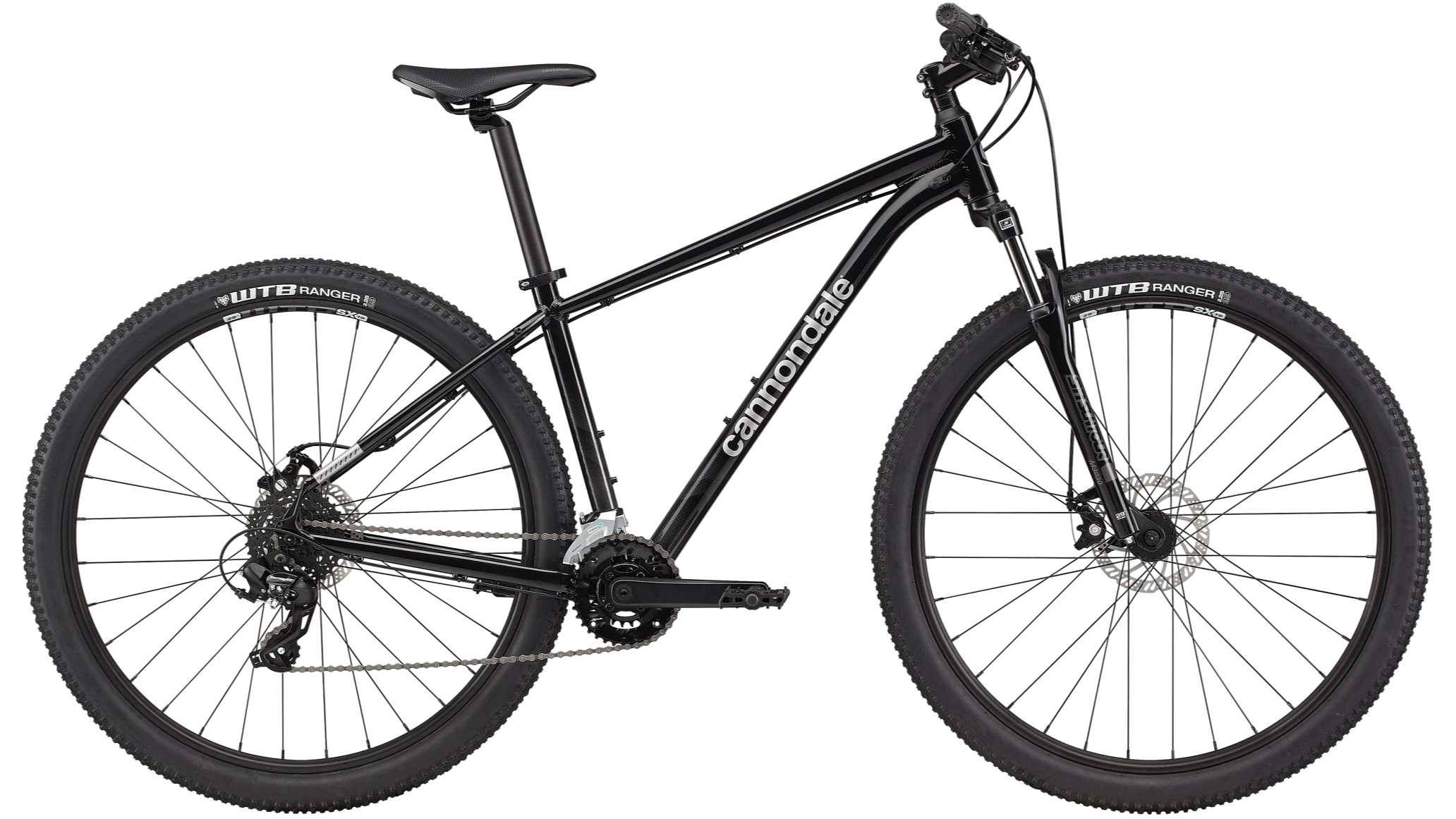
Cannondale Trail 8
Specifications
Reasons to buy
Reasons to avoid
Cannondale hasn't designed the Trail 8 to be a singletrack slayer, however if you are looking for a bike that can cruise around on gentle singletrack, green routes and gentle blue trails then the Cannondale is a good option.
The alloy frame has loads of neat details and a great finish as you would expect from the premium American brand. The frame even features Cannondale's Save Micro-Suspension technology which uses carefully shaped tubes in the rear triangle to help absorb vibrations. The smaller models come with 27.5in wheels rather than 29in wheels to better suit the needs of smaller riders too. Geometry is well thought out as well, featuring a 68-degree head angle and 73.5-degree seat angle to give balanced handling and a comfortable riding position
Cannondale has equipped the Trail 8 with a MicroShift 3 x 7 drivetrain which gives it a decent spread of gearing. It comes with wheels with Formula hubs, WTB rims and WTB tires for a reliable wheelset.
How to choose the best mountain bikes under £500
What size of MTB do I need?
All manufacturers should have a size chart to recommend the best size of bike based on your height. It's important to get the right size bike as the angles of your mountain bike frame make all the difference to the bike's ride quality. As mountain bike designers have spent the past four decades transitioning away from the road bike roots of frame design, they have discovered two measurements that have a meaningful impact on your off-road cycling experience: head angles and reach.
By creating longer front triangles, with more relaxed head tubes, your weight distribution and steering influence are better coordinated on challenging trails. A slacker head angle prevents that awful feeling of pitching over the bars as you start descending a particularly steep trail. It compensates for the gradient you are attempting to negotiate and keeps you more confidently in position to steer and guide the bike downhill.
Longer bikes are more stable and at speed, when your tires can be deflected by rocks or roots, the reduced twitchiness of a bike with greater reach, is often the difference between reacting correctly to a terrain input, and crashing.
Good geometry is not complicated. It merely requires considered design, even with a budget bike. Great geometry costs the same as average geometry in terms of engineering and production. It is heartening to see that some of the new budget bikes are bringing much slacker angles and roomier front triangles to market, making for bikes that are a lot more confidence-inspiring to ride off-road.
How do I choose the right mountain bike?
While the quality of mountain bikes keeps getting better and better, at the £500 mark you still need to shop carefully to ensure you are getting a bike that is going to be fun to ride. The best mountain bikes under £500 that we have listed in this guide are all great bikes, however there are some bikes on the market that present themselves as great buys but really lack performance, durability and even safety.
The bikes we have listed above are all from well-known manufacturers with many years of industry experience, which means they are able to produce high-quality bikes at a great price. Avoid unknown brands and retailers as the bikes they offer are likely to be of poor quality.
What's the best rim width?
Wider wheels allow for lower tire pressures and a more natural shaping of the casing when inflated.
On premium mountain bikes the standard internal rim width is now between 25- and 30mm, allowing riders to benefit from the increased traction and ride comfort of lower pressures, used in combination with larger-volume tires.
Narrow rims in the 20-23mm range constrain the structure of a tire when inflated, creating a lightbulb shape that can roll and squirm through high-speed corners, instead of providing accurate steering feedback and predictable traction.
Wider rims are even more important on budget mountain bikes, because of their axles. Due to cost, entry-level bikes use quick-release skewers, instead of stouter thru-axles, resulting in less overall lateral rigidity and greater flex throughout the frame. This is especially true of a budget mountain bike’s rear axle, which only has a 135mm axle spacing.
By running a wide rim, you can compensate for the issue by having your tires shape larger when inflated, allowing them to absorb more terrain forces as you ride along, reducing flex forced on the frame.
How wide should tires be?
Mountain biking is deeply addictive and although you might be on a budget, the longing for better components will soon start. By far the most effective upgrade in terms of immediate trail riding reward is better tires.
Your contact pact with terrain has an enormous influence on steering and braking performance, especially when rolling over loose, muddy or technical terrain. The trend is towards larger tire volumes, with a 2.25in width casing now considering the minimum. Larger tires in the 2.3-2.4in range add marginal rotating mass, but the benefit they deliver in terms of ride quality and traction are immense.
Consider running different tread patterns front and rear. When descending, your mountain bike’s steering dynamics and braking are facilitated by the front tire and it makes a great deal more sense to run something with larger tread blocks at the front. Your rear tire is transferring power to drive the bike forwards on flat fire roads or climbs, and there you can save energy and lower the rolling resistance by running a tire with less aggressive tread blocks.
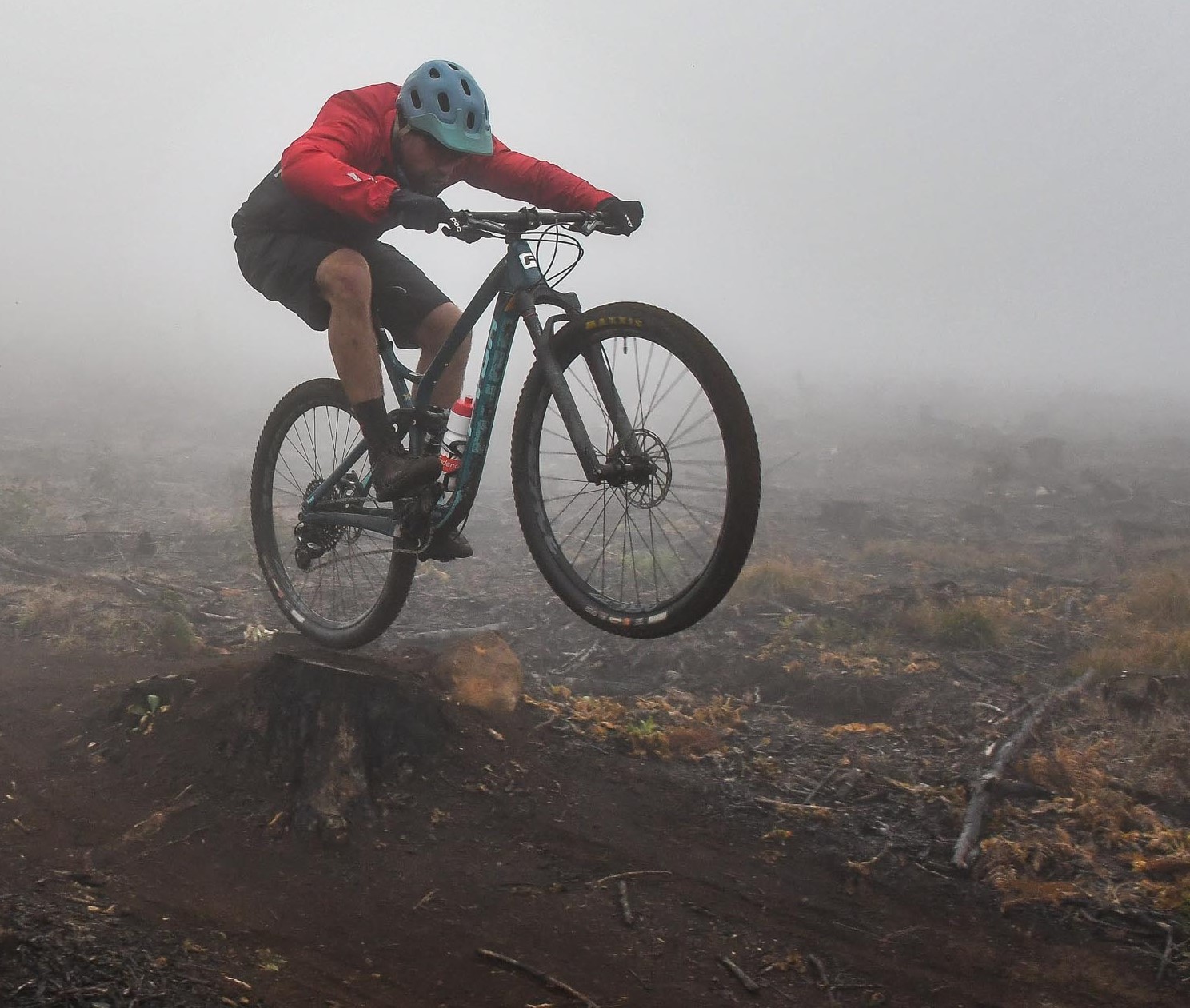
Lance Branquinho is a Namibian-born journalist who graduated to mountain biking after injuries curtailed his trail running. He has a weakness for British steel hardtails, especially those which only run a single gear. As well as Bike Perfect, Lance has written for MBR.com, Off-Road.cc and Cycling News.
